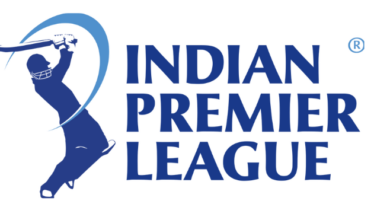
It’s tough enough generating leads or making sales among audiences that know your brand let alone reaching out to prospects who don’t know you.
Truly, cold outreach sends shivers down many salesperson’s spines, yet this feared discipline holds opportunities to grow your business exponentially.
The fine print is you don’t have much time or multiple chances to showcase your value. So, your cold outreach needs careful planning to ensure you get things right the first time around.
To that end, let’s consider the top mistakes you should avoid if you want your outreach to succeed.
Not Defining Your Ideal Customers Correctly
Blasting generic messages to identify “what sticks” isn’t an effective prospecting approach. An effective outreach revolves around hitting the right buttons among the right audiences at the right time.
For this to happen, you’ll need to build a custom list of prospects based on your total addressable market. This custom list will contain properly researched potential customers who are good fits and face challenges you can adequately solve.
Defining your ICP provides guidelines that may help you understand your audience, their interests, and possible responses.
This way, your team doesn’t get stretched or scattered pursuing resource-draining accounts that will never convert.
Combining your ICP with marketing intelligence and predictive analytics to accelerate conversion.
So in a situation where a trigger event ( mergers, expansions, relocations, etc.) occurs, you’ll be well placed to craft specific messages based on your knowledge.
Not Offering value
A key reason why cold calling is challenging to most salespeople is that they see the prospect as an answer to their solution.
Huh?
Well, you have targets to meet and deals to close, so the sooner prospects realize this and agree to use your solutions, the better for you.
That’s pretty much asking the prospect to solve the problem for you.
Rather than hopping on the phone and hitting prospects with your pitch, take the time to walk in their shoes so you can lead with value.
Let that first interaction tie with something that affects their everyday performance, revenues, or life. This allows the prospect to see that you have a genuine interest in what matters to them.
It may even encourage the prospect to open up about their needs or challenges. Only then should you suggest a second round of calls, a demo, or a meeting.
Take a Single-Channel Outbound Approach
From email marketing to cold calling, LinkedIn messaging, and direct mail, marketers try out various outreach channels to identify the one that works.
When they find it, it feels like they have struck gold and they zero in on that channel to drive results.
While this is understandable, it’s also an alienating tactic that keeps your business from leveraging multiple touch points. The risks include:
- Lowering your visibility: Say you choose to focus on email marketing alone, you’ll be placing your company’s business success in one strategy. Your competitors, on the other hand, engage prospects across multiple channels, increasing awareness of their brand, and building a framework for a scalable outreach.
- Limiting engagement. A single-channel approach says, “if you want to reach me, this is only way how.” If the prospect doesn’t use that channel, what are the odds they will contact you? A multi-channel strategy offers potential customers different ways to contact you which makes it convenient for them to do so when they are ready.
- Drowning in the noise. Vendors continually strive to get prospects’ attention while prospects are turning numb to unsolicited messages. Taking the multi-channel route may help ensure your message rises above the hubbub and reaches your audience.
Not Verifying Prospect Data
Data changes constantly. World over people change jobs and positions while companies merge, reinvent, or go out of business.
While many businesses put off verifying their data (to save money) it ends up hampering their marketing efforts and costing them big money. They are engaging deaf-end prospects after, all, aren’t they?
If you send out promotional emails and a couple of emails bounce you may be tempted to think it’s no big idea.
Only it is.
Internet service providers score you on a 0-100 scale. If your deliverability falls below a certain threshold (70-85%) it may damage your reputation.
By damage, we mean service providers may channel your emails to spam folders belonging to recipients within their network. This will only serve to frustrate your outreach efforts.
In the same breath, if your data only comprises names and email addresses, you’ll have a tough time segmenting your prospects and personalizing messages.
Without extra (and vital) information, you’ll lose the ability to push the right buttons when engaging recipients effectively lowering open and response rates.
Verifying data enables you to segment your database to facilitate multi-layered marketing campaigns and increase ROI.
How can you verify data?
Data enrichment tools like Clearbit, MaxMind, Crunchbase Enterprise, Experian, and ZoomInfo are helpful for learning more about site users, businesses, and potential customers.
The best part? They obtain extra information about these prospects without going back to them to ask.
Making Impersonal LinkedIn Connection Requests
While we recommend growing your LinkedIn audience to maximize reach and brand awareness, we don’t advocate sending connection requests to just about everyone.
Ideally, your network should comprise your target market, advocates, and influencers. And some of the best places to find them are in LinkedIn community groups. So, join industry-relevant and interest-relevant groups to identify potential connections.
Before inviting people to join your network, learn something about them, their customer base, and if their businesses are good fits. You can then personalize your invite so your audience sees the value of accepting your invite and how they can benefit from the connection.
Be careful not to over-promote your products/services or business through unending sales pitches and promotional updates. Focus rather on crafting content that serves your audiences’ needs and interests.
In Conclusion
A common theme in the cold outreach mistakes we’ve talked about is lack of preparation. If you’re aiming for a successful outreach strategy, invest time in research, understand your customers, and craft messages that resonate with them.






